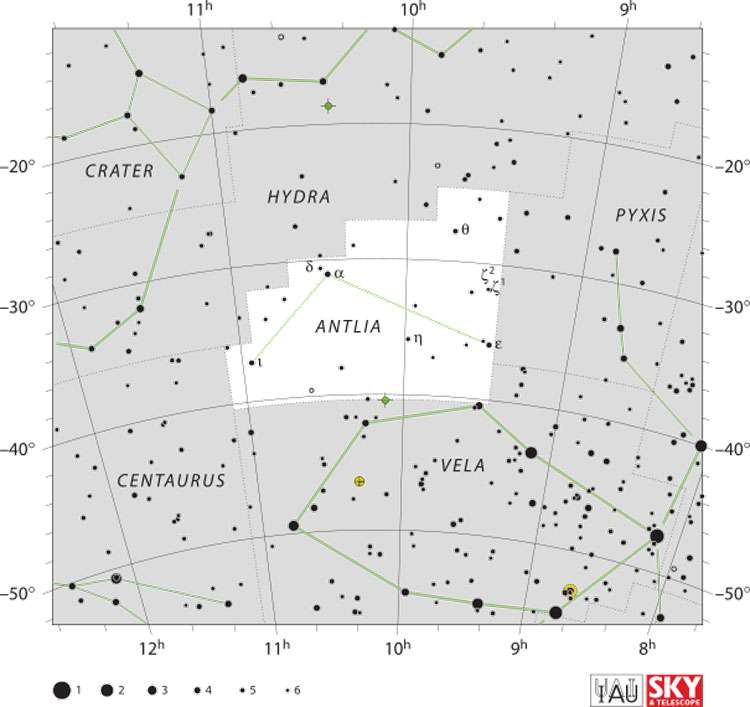Antlia is one of fourteen southern constellations created by Nicolas-Louis de Lacaille in 1756 as a result of his observations of ten thousand southern stars, but not introduced to the public until the posthumous publication of his work in 1763. Originally called La Machine Pneumatique (the Air Machine), then Latinized to Antlia Pneumatique (the Air Pump) and later simplified to merely Antlia (the Pump), it represented an air pump invented by French physicist Denis Papin in the 1670's for his studies of the vacuum.
Historical Maps of Antlia

Above, the region near Antlia, from Bode's 1801 Uranographia
(Image Credit and © above and below Tartu Observatory Virtual Museum; used by permission)
The "double-pump" shown here is a later version of Papin's pumps; Lacaille drew an earlier version

Modern Map of Antlia
Wikimedia Commons map by IAU and Sky & Telescope magazine (Roger Sinnott & Rick Fienberg)

Constellations Bordering Antlia
Centaurus, Hydra, Pyxis, Vela
Stars in Antlia
Stars that have common names often have multiple names, so the common names shown (if any) cannot be considered authoritative. Right ascension and declination are given in 2000.0 coordinates.
α Ant
β Ant
γ Ant
δ Ant
ε Ant
|